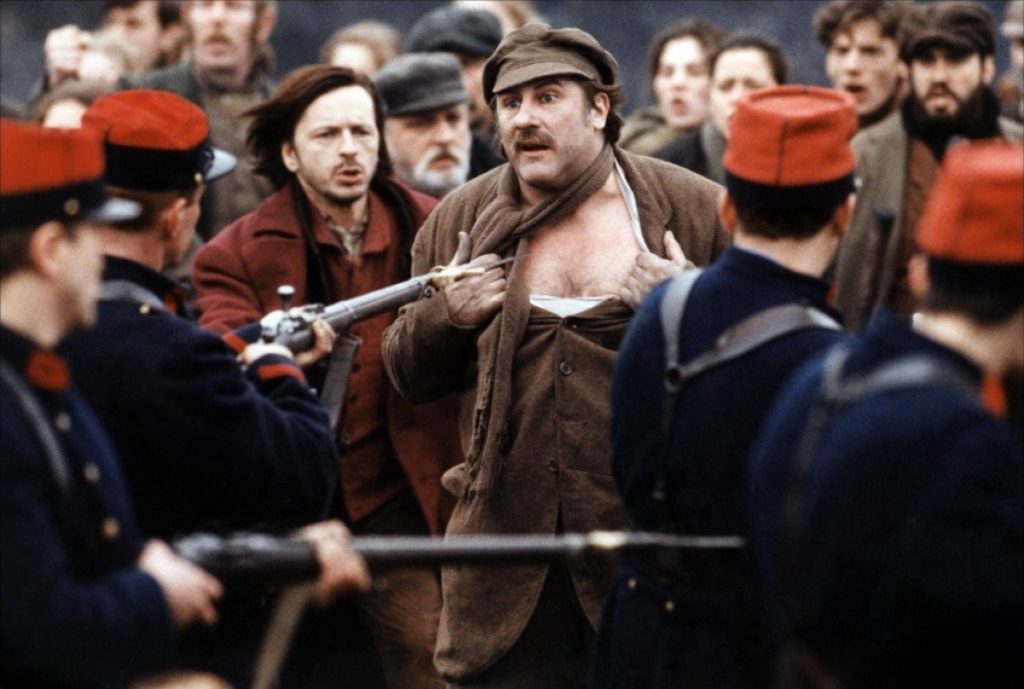11 Nov 2019 | Interviews
Structural violence and the resulting oppression of the needy
Teresa – How do you define structural violence? Could you illustrate this concept?
João Roberto – Structural violence results from a mechanism used by several forms of power that neglects and limits the access of part of the population to the basic rights to a have dignified life, which leads to social exclusion and can spawn revolt in the underprivileged. In the nineteenth century, Émile Zola wrote a novel – Germinal – which emphasizes the strong opposition of classes, the exploitation of employees and the lack of submission of the working class. A film with the same title was made 1993, inspired by the novel of Emile Zola. The story is set in a small village of coal miners in France.
The work is unhealthy and the lungs of the miners are impregnated with coal. People risk their lives because there is always the possibility of a mine collapse. A short passage from the novel illustrates the exposure of workers to the harmful health conditions:
– Yes, yes; they have pulled me three times out of that, torn to pieces. Once with all my hair scorched, once with my gizzard full of earth, and another time with my belly swollen with water, like a frog. And then, when they saw that nothing would kill me, they called me Bonnemort for a joke. (…)
– Have you been working long at the mine? (…)
– Long? I should think so. I was not eight when I went down into the Voreux and I am now fifty-eight. (…) Fifty years at the mine, forty-five down below!

The characters feel devoured by this condition, which Emile Zola shows by the personification of the mineshaft: ” One thing he did grasp perfectly: the pit could swallow people in mouthfuls of twenty or thirty at a time, and with such ease that it seemed not even to notice the moment of their consumption.”
The pay is low and many families go hungry. The situation is stable until the arrival of a young man with revolutionary ideas and, instigated by him, the famished workers decide to go on strike. There is a rebellion, and many die in the name of this cause. According to Jean-Marie Muller, “a person’s attitude towards violence is greatly determined by his or her attitude towards death.” Because this concerns a realistic work, set in the nineteenth century, the Darwinian theory overlaps. The strongest will survive the weakest. Then, after the strike and the deaths, the poor return to work in the mine without achieving the improvements they were claiming.
Rousseau in “The origin of inequality among men” writes: “so long as they undertook only what a single person could accomplish, and confined themselves to such arts as did not require the joint labor of several hands, they lived free, healthy, honest and happy lives. (…) But from the moment one man began to stand in need of the help of another; from the moment it appeared advantageous to any one man to have enough provisions for two, equality disappeared, property was introduced, work became indispensable, and vast forests became smiling fields, which man had to water with the sweat of his brow, and where slavery and misery were soon seen to germinate and grow up with the crops.”
The work of Emile Zola expresses the misfortune of the miserable people spoken of by Rousseau in his considerations about the principle of inequality between men. The miners are violated by the social system; it is emphasized that in this narrative the disparity between life and death, well-being and malaise, contraposes the social classes. The home of the bourgeois “smelled of good food that was a delight. The shelves of the cupboards were full of provisions to lavish,” while the house of the employees emitted “an odor of cooked onion, (…) poisoned the hot, heavy air, always laden with an acrid flavor of coal.”
The distance between these two so disparate worlds appears in the descriptions of locations, in the food they eat, in the amorous relationships, in the forms of entertainment, in the opposition between gains and losses. Therefore, this work brings into focus the structural violence and also the revolt of the strikers. The story is about oppression, misery and pain, and the economic strength of the coal mining company that submits its employees to unfavorable working conditions. According to German philosopher Hannah Arendt “nothing is more common than the combination of violence and power.” From the perspective of the social classes, it generates inequality and exclusion. While the well-to-do have their tables filled with food and regale themselves with delicacies, the miners die for a piece of bread. This is the structural violence.
João Roberto de Araújo is an author of social and emotional education books and founder of 50-50 SEL Solutions.







